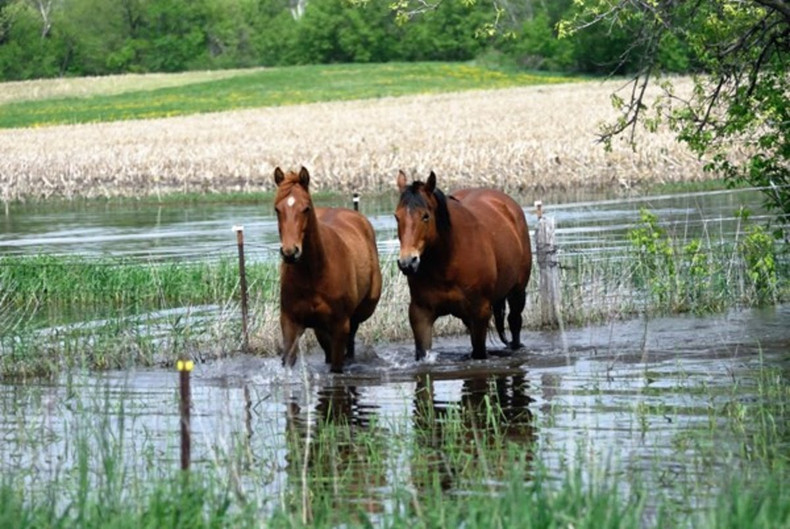So, what do you do when you’re faced with a flood emergency?

- Have a plan – Listen to the news and weather reports, keep yourself updated by emergency services so you can spring into action when required, keep a list of emergency numbers handy and be prepared to move in advance.
- Have an evacuation plan and route – Organise prior somewhere you can take your horses in the event you need to evacuate them. Plan the way you will go and remember never to drive over a flooded road.
- Have a well-stocked emergency kit – this can include things such as wire cutters, torches and even extra headcollars.
- Stock up on supplies – If you are planning to leave with your horses you may possibly need some portable yards to keep them safe, plenty of dry feed and a good supply of clean water. Horses under stress can stop eating and drinking so it is a good idea to have some electrolytes in your supplies such as Electro paste to help their recovery and stay hydrated.
- Vehicle and Float – make sure you have a full tank of fuel and your float and car are in good working order.
Sometimes it is not an option to be able to evacuate your horses, but you can still try and keep them safe even if you must go yourself.
- Never leave them in stables or in a small yard if you are evacuating without them. Horses are good swimmers and can try and reach higher ground if need be leaving them confined reduces that ability. It may be necessary to pull down internal fencing to allow them access to higher safer areas.
- Leave their headcollars and rugs off so as not to weigh them down when they are wet and prevent them getting snagged on fencing or debris.
- Keep a good description of your horse including photos and a microchip number if they have one so they can be easily identified when found or rescued.
Please remember that the emergency is not over when the waters recede, monitor your horse closing following a flood, so be sure to look out for:
- Colic
- Hypothermia
- Stress
- Wounds
- Hoof problems
- Rain scald
- Greasy heel
- Eating moldy feed
- Contaminated water
Floods can damage fencing and leave rubbish when the water recedes, so be sure to check your horses paddocks thoroughly before letting your horses back out to ensure they do not injure themselves.
Finally, when a flood is threatening the most important thing you can do is be prepared, preparation is key and can help save both you and your horse. Please done be afraid to ask for help, the equestrian community has a wonderful way of coming together in crisis!
Stay safe everyone.

